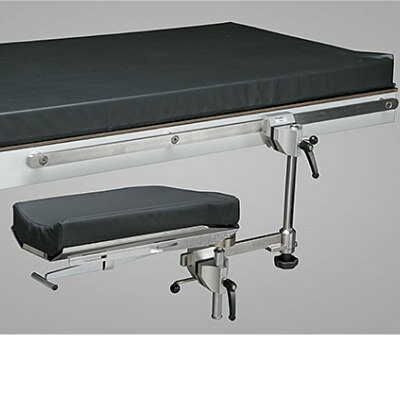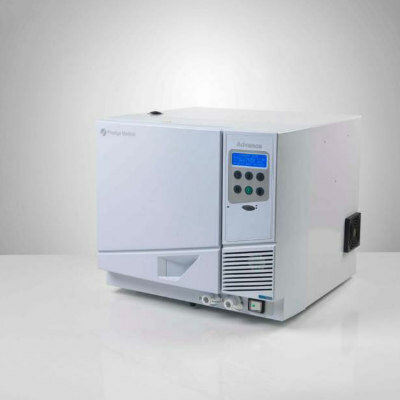Smartphone-Based Readerless System Measures Blood Glucose for Early Detection of Prediabetes
|
By HospiMedica International staff writers Posted on 03 Apr 2023 |

Prediabetes is characterized by high blood sugar levels that may progress to type 2 diabetes. Fortunately, this condition can be reversed with lifestyle changes such as a healthier diet and exercise, if detected early. However, many individuals with prediabetes are unaware of their condition, which puts them at greater risk of developing diabetes and complications such as heart disease, kidney failure, and vision loss. Screening for prediabetes typically involves laboratory testing at a healthcare facility or using a portable glucometer for at-home testing. Unfortunately, access and cost may limit widespread screening. Now, researchers have discovered an optimal approach to enhance early detection of prediabetes.
Researchers at the University of Washington (Seattle, WA, USA) have developed GlucoScreen, which takes advantage of the capacitive touch sensing abilities of smartphones to measure blood glucose levels without the need for a separate reader. This approach will help reduce the cost and increase accessibility of glucose testing, particularly for large-scale one-time screenings. GlucoScreen test strips measure the electrochemical reaction created by mixing blood and enzymes as an amplitude along a curve at a rate of five times per second. The strip then transmits this curve data to the phone encoded as a series of touches at variable speeds using pulse width modulation. “Pulse width” refers to the distance between peaks in the signal - in this case, the length between taps. Each pulse width represents a value on the curve, with a greater distance between taps indicating a higher amplitude of the electrochemical reaction on the strip.
The new GlucoScreen system has several advantages over traditional glucose testing methods. By leveraging the capacitive touch sensing capabilities of smartphones, it eliminates the need for a separate reader, making glucose testing more accessible and cost-effective for one-time screening of a large population. Additionally, the system does not require complicated electronic components, reducing the cost of manufacturing and power consumption compared to conventional communication methods like Bluetooth and Wi-Fi. The test strip is designed with photodiodes, which draw power from the phone's flash, eliminating the need for batteries or a USB connection. The GlucoScreen app walks users through the testing process, and after the data is transmitted from the strip to the phone, the app uses machine learning to analyze the data and calculate a blood glucose reading.
The researchers conducted both in vitro and clinical testing to evaluate their approach. In the clinical study, they enrolled 75 consenting patients who were scheduled to undergo a laboratory blood glucose test. The performance of GlucoScreen was compared against that of a conventional strip and glucometer, with the laboratory test serving as the ground truth. While additional testing is required, the preliminary results suggest that GlucoScreen's accuracy is comparable to that of a glucometer. Of significance, the system was found to be accurate at the critical threshold between a normal blood glucose level of 99 mg/dL or below and prediabetes, which is defined as a blood glucose level between 100 and 125 mg/dL. The researchers believe that GlucoScreen's performance will improve with further inputs.
“In conventional screening, a person applies a drop of blood to a test strip, where the blood reacts chemically with the enzymes on the strip. A glucometer is used to analyze that reaction and deliver a blood glucose reading,” explained lead author Anandghan Waghmare, a Ph.D. student in the Allen School’s UbiComp Lab. “We took the same test strip and added inexpensive circuitry that communicates data generated by that reaction to any smartphone through simulated tapping on the screen. GlucoScreen then processes the data and displays the result right on the phone, alerting the person if they are at risk so they know to follow up with their physician.”
“Because we use the built-in capacitive touch screen that’s present in every smartphone, our solution can be easily adapted for widespread use. Additionally, our approach does not require low-level access to the capacitive touch data, so you don’t have to access the operating system to make GlucoScreen work.” explained co-author Jason Hoffman, a Ph.D. student in the Allen School. “We’ve designed it to be ‘plug and play.’ You don’t need to root the phone — in fact, you don’t need to do anything with the phone, other than install the app. Whatever model you have, it will work off the shelf.”
“One of the barriers I see in my clinical practice is that many patients can’t afford to test themselves, as glucometers and their test strips are too expensive. And, it’s usually the people who most need their glucose tested who face the biggest barriers,” said Thompson, a family physician and professor in the UW Department of Family Medicine and Department of Global Health. “Given how many of my patients use smartphones now, a system like GlucoScreen could really transform our ability to screen and monitor people with prediabetes and even diabetes.”
Related Links:
University of Washington
Latest Point of Care News
- Critical Bleeding Management System to Help Hospitals Further Standardize Viscoelastic Testing
- Point of Care HIV Test Enables Early Infection Diagnosis for Infants
- Whole Blood Rapid Test Aids Assessment of Concussion at Patient's Bedside
- New Generation Glucose Hospital Meter System Ensures Accurate, Interference-Free and Safe Use
- Unique Quantitative Diagnostic System Enables Immediate Diagnosis and Treatment at POC
- POC Myocardial Infarction Test Delivers Results in 17 Minutes
- Novel Diagnostic Hand-Held Device Detects Known Biomarkers for Traumatic Brain Injury
Channels
Artificial Intelligence
view channel
AI-Powered Algorithm to Revolutionize Detection of Atrial Fibrillation
Atrial fibrillation (AFib), a condition characterized by an irregular and often rapid heart rate, is linked to increased risks of stroke and heart failure. This is because the irregular heartbeat in AFib... Read more
AI Diagnostic Tool Accurately Detects Valvular Disorders Often Missed by Doctors
Doctors generally use stethoscopes to listen for the characteristic lub-dub sounds made by heart valves opening and closing. They also listen for less prominent sounds that indicate problems with these valves.... Read moreCritical Care
view channel
Deep-Learning Model Predicts Arrhythmia 30 Minutes before Onset
Atrial fibrillation, the most common type of cardiac arrhythmia worldwide, affected approximately 59 million people in 2019. Characterized by an irregular and often rapid heart rate, atrial fibrillation... Read more
Breakthrough Technology Combines Detection and Treatment of Nerve-Related Disorders in Single Procedure
The peripheral nervous system (PNS) serves as the communication network that links the brain and spinal cord to every other part of the body. It consists of two parts: the somatic nervous system, which... Read moreSurgical Techniques
view channel
Hydrogel-Based Miniaturized Electric Generators to Power Biomedical Devices
The development of engineered devices that can harvest and convert the mechanical motion of the human body into electricity is essential for powering bioelectronic devices. This mechanoelectrical energy... Read moreWearable Technology Monitors and Analyzes Surgeons' Posture during Long Surgical Procedures
The physical strain associated with the static postures maintained by neurosurgeons during long operations can lead to fatigue and musculoskeletal problems. An objective assessment of surgical ergonomics... Read more.jpg)
Custom 3D-Printed Orthopedic Implants Transform Joint Replacement Surgery
The evolving field of 3D printing is revolutionizing orthopedics, especially for individuals requiring joint replacement surgeries where traditional implants fail to provide a solution. Although most people... Read more
Cutting-Edge Imaging Platform Detects Residual Breast Cancer Missed During Lumpectomy Surgery
Breast cancer is becoming increasingly common, with statistics indicating that 1 in 8 women will develop the disease in their lifetime. Lumpectomy remains the predominant surgical intervention for treating... Read morePatient Care
view channel
Surgical Capacity Optimization Solution Helps Hospitals Boost OR Utilization
An innovative solution has the capability to transform surgical capacity utilization by targeting the root cause of surgical block time inefficiencies. Fujitsu Limited’s (Tokyo, Japan) Surgical Capacity... Read more
Game-Changing Innovation in Surgical Instrument Sterilization Significantly Improves OR Throughput
A groundbreaking innovation enables hospitals to significantly improve instrument processing time and throughput in operating rooms (ORs) and sterile processing departments. Turbett Surgical, Inc.... Read more
Next Gen ICU Bed to Help Address Complex Critical Care Needs
As the critical care environment becomes increasingly demanding and complex due to evolving hospital needs, there is a pressing requirement for innovations that can facilitate patient recovery.... Read moreGroundbreaking AI-Powered UV-C Disinfection Technology Redefines Infection Control Landscape
Healthcare-associated infection (HCAI) is a widespread complication in healthcare management, posing a significant health risk due to its potential to increase patient morbidity and mortality, prolong... Read moreHealth IT
view channel
Machine Learning Model Improves Mortality Risk Prediction for Cardiac Surgery Patients
Machine learning algorithms have been deployed to create predictive models in various medical fields, with some demonstrating improved outcomes compared to their standard-of-care counterparts.... Read more
Strategic Collaboration to Develop and Integrate Generative AI into Healthcare
Top industry experts have underscored the immediate requirement for healthcare systems and hospitals to respond to severe cost and margin pressures. Close to half of U.S. hospitals ended 2022 in the red... Read more
AI-Enabled Operating Rooms Solution Helps Hospitals Maximize Utilization and Unlock Capacity
For healthcare organizations, optimizing operating room (OR) utilization during prime time hours is a complex challenge. Surgeons and clinics face difficulties in finding available slots for booking cases,... Read more
AI Predicts Pancreatic Cancer Three Years before Diagnosis from Patients’ Medical Records
Screening for common cancers like breast, cervix, and prostate cancer relies on relatively simple and highly effective techniques, such as mammograms, Pap smears, and blood tests. These methods have revolutionized... Read moreBusiness
view channel
Johnson & Johnson Acquires Cardiovascular Medical Device Company Shockwave Medical
Johnson & Johnson (New Brunswick, N.J., USA) and Shockwave Medical (Santa Clara, CA, USA) have entered into a definitive agreement under which Johnson & Johnson will acquire all of Shockwave’s... Read more
















